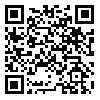BibTeX | RIS | EndNote | Medlars | ProCite | Reference Manager | RefWorks
Send citation to:
URL: http://tumj.tums.ac.ir/article-1-7577-en.html

 , Ehteramolsadat Hosseini *
, Ehteramolsadat Hosseini * 
 2, Zohreh Sharifi1
2, Zohreh Sharifi1 
 , Azita Azarkeivan1
, Azita Azarkeivan1 
 , Mehran Ghasemzadeh1
, Mehran Ghasemzadeh1 

2- Blood Transfusion Research Center, High Institute for Research and Education in Transfusion Medicine, Tehran, Iran. ,
Background: Human leukocyte antigen E is a member of non-classical HLA class I. Interaction between HLA-E molecule on the target cells and inhibitory CD94/NKG2A receptor on the cell surface of natural killer (NK) cells has an important role in the regulation of immune system against pathogens; therefore different cell surface expression of HLA-E molecule plays an important role in host resistance against viral infections as well as host response to treatment. Considering this fact, we analyzed the frequency of different HLA-E genotypes (HLA-E*01010101, HLA-E*01030103, HLA-E*01010103) in major thalassemic patients who underwent frequent transfusion therapy and are thus more susceptible to infectious diseases.
Methods: This study was a cross-sectional study of 104 major thalassemic patients who referred to Tehran Thalassemia Clinic between the years 2015 to 2016. Blood DNA was extracted and proliferated by sequence-specific primer polymerase chain reaction (SSP PCR). The PCR product was subjected to electrophoresis on 1.5 percent agarose gel then DNA fragment bands on the gel were detected by exposing to UV light. Furthermore, PCR products were also subjected to sequencing analysis for further confirmation.
Results: From 104 patients in this study, 49 (47.1%) were man and 55 (52.9%) were women. These patients were in the age range of 16 to 43 years (mean+SD; 31.03±4.7 year). The frequency of HLA-E*01010103 genotype (64.4 percent) was significantly (P= 0.001) higher than the genotypes of HLA-E*01010101 (15.4%) and HLA-E*01030103 (20.2%) whereas there was no difference between the frequency of HLA-E*0103 allele (52.4%) and HLA-E*0101 (47.6%).
Conclusion: This is the first study that examined the HLA-E polymorphisms in Iranian thalassemic patients referred to Tehran Thalassemia Clinic. This study has shown that the frequency of HLA-E*01010103 genotype was significantly higher than other genotypes of HLA-E whereas there was no difference between the frequency of HLA-E*0103 allele and HLA-E*0101 allele. Whether different frequencies of HLA-E genotype may affect thalassemic patients’ susceptibility to blood-borne infections will be of interest for future studies.
| Rights and permissions | |
 |
This work is licensed under a Creative Commons Attribution-NonCommercial 4.0 International License. |



